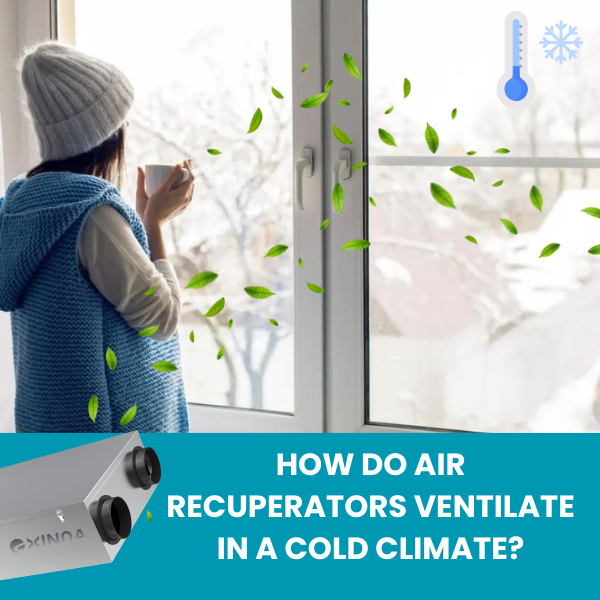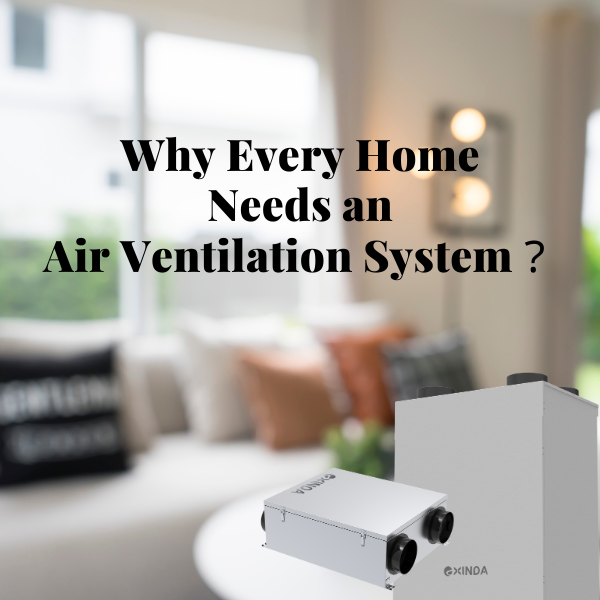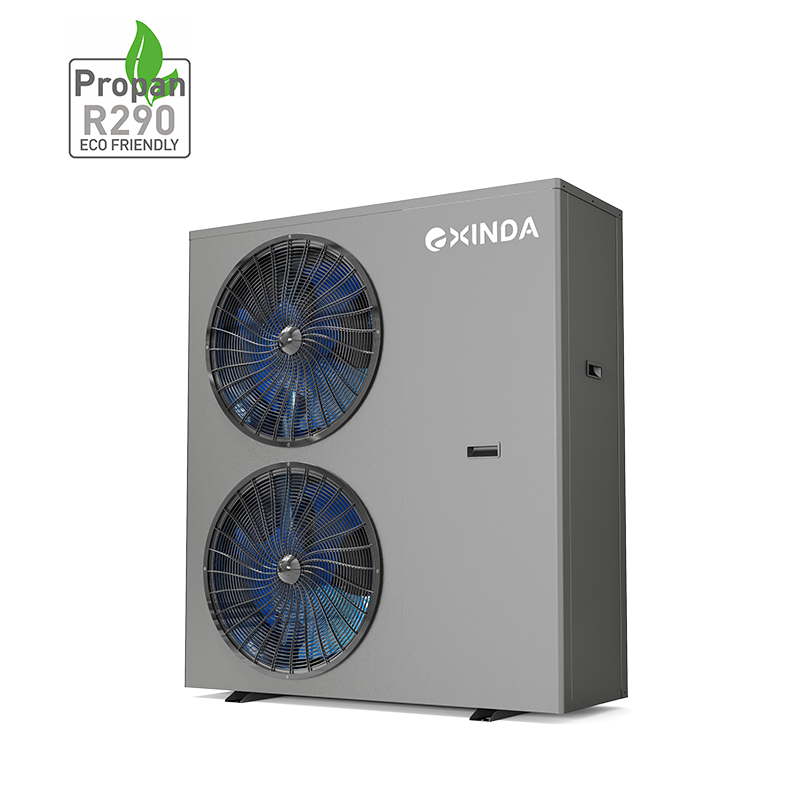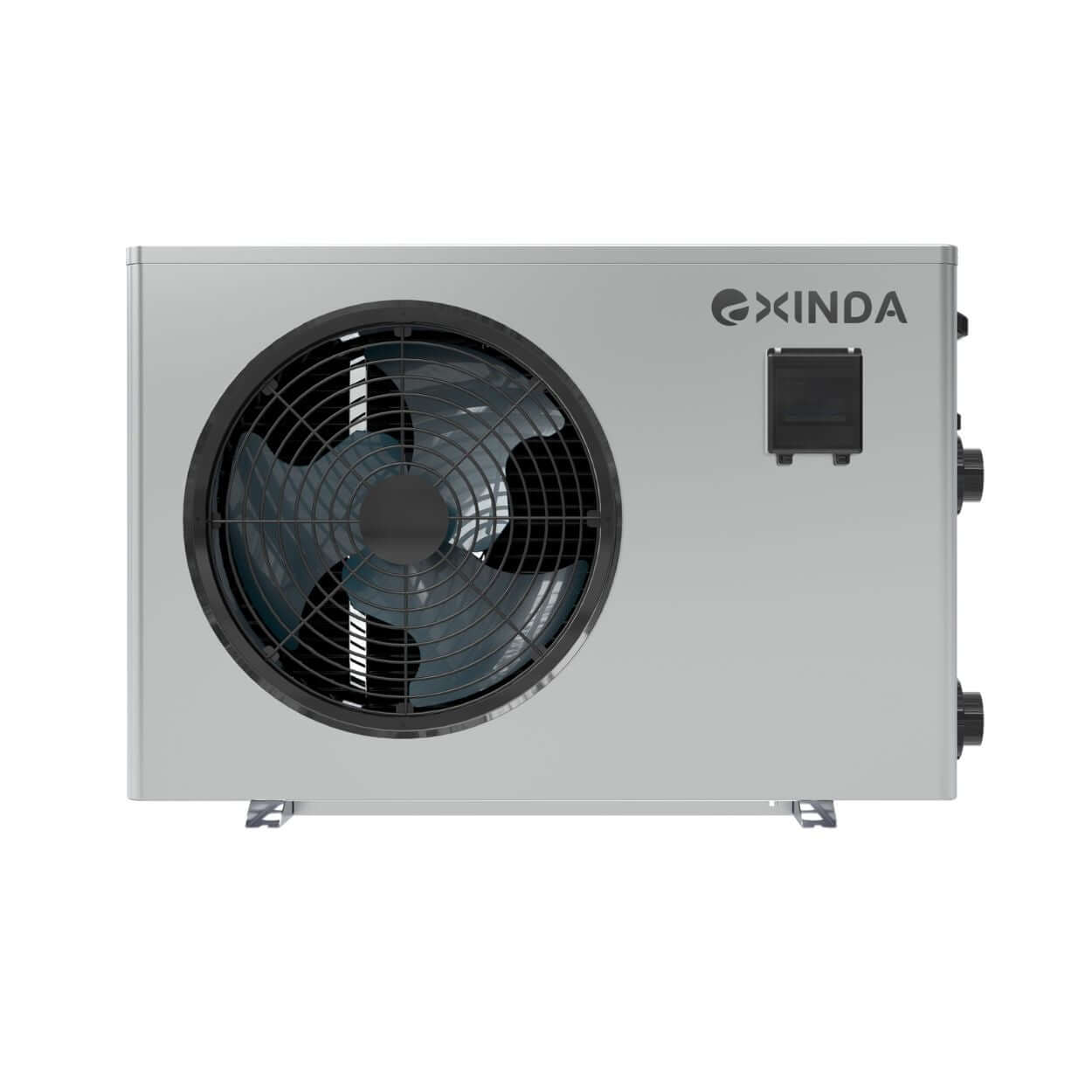
During the winter months, the cold often compels us to enhance the seal of our homes to maintain warmth indoors. However, this high level of airtightness also limits natural ventilation, thereby complicating the management of indoor air quality. While it is crucial to stay warm, we must not overlook the necessity of maintaining good indoor air quality.
Fortunately, Heat Recovery Ventilation (HRV) and Energy Recovery Ventilation (ERV) systems provide an efficient solution to this dilemma. These systems can effectively exchange stale indoor air with fresh outdoor air without significantly increasing energy consumption, thus ensuring air quality while minimizing energy loss.
The Importance of Ventilation in Cold Weather
Disadvantages of Traditional Window Ventilation in Winter
During winter, traditional window ventilation can introduce several problems. Opening windows allows cold outdoor air to quickly enter, causing indoor temperatures to drop sharply. This not only makes occupants feel uncomfortably cold but also forces heating systems to work harder to maintain a comfortable temperature, thereby increasing energy consumption and heating costs. Additionally, the ingress of cold air can lead to health issues for the occupants, such as respiratory diseases triggered by cold drafts.
Indoor Pollutant Concentration Issues
With windows closed for prolonged periods during winter and the reliance on indoor heating, homes become significantly more sealed off. This sealed environment facilitates the rise in the concentration of indoor pollutants. For instance:
- Cooking Fumes: Cooking can increase fine particulate matter (PM2.5) to levels that are often several times higher than the outdoor air quality standards set by the World Health Organization, which recommends PM2.5 not exceed 10 µg/m³ averaged over 24 hours.
- Carbon Monoxide (CO): Improperly vented furnaces, stoves, or gas heaters can elevate carbon monoxide levels dangerously. The Environmental Protection Agency (EPA) recommends indoor air CO levels to remain well below 9 parts per million (ppm) over an 8-hour period, as higher concentrations can lead to poisoning, with chronic exposure potentially resulting in neurological damage.
- Volatile Organic Compounds (VOCs): Common household cleaning chemicals can elevate indoor VOC concentrations to a range of 0.2 to 2 mg/m³, occasionally reaching higher levels during active use. The EPA states that long-term exposure to VOCs can exacerbate respiratory conditions, liver and kidney damage, and central nervous system problems.
Scenarios Requiring Ventilation

- Winter Gatherings and Open Kitchens: During winter, especially around holidays, family gatherings are frequent, and the use of open kitchens can lead to rapid accumulation of cooking smoke and odors. Without an effective ventilation system, these pollutants can significantly deteriorate indoor air quality, affecting both the comfort and health of the occupants.
- Ventilation After Parties: Activities like home parties typically increase indoor carbon dioxide levels, with the addition of alcohol and perfumes also burdening the indoor air. Effective ventilation helps quickly clear these gases, maintaining fresh indoor air.
- Indoor Swimming Pools: During winter, the use of disinfectants like chlorine in indoor swimming pools can produce irritating odors, especially in a sealed environment, potentially causing irritation or respiratory issues. Proper ventilation systems can effectively reduce the concentration of chlorine and other chemicals, protecting the respiratory health of users.
Heat Recovery Ventilation (HRV) and Energy Recovery Ventilation (ERV)

1.What are Heat Recovery Ventilation (HRV) and Energy Recovery Ventilation (ERV)?
Heat Recovery Ventilation (HRV) systems are designed to recover heat from exhaust air; Energy Recovery Ventilation (ERV), besides recovering heat, also adjusts the humidity of the incoming and outgoing air.
2.How do Heat Recovery Ventilation (HRV) and Energy Recovery Ventilation (ERV) Work?
These systems ventilate by exchanging indoor and outdoor air, retaining indoor heat and appropriate humidity levels through heat exchangers.
3.Differences Between Heat Recovery Ventilation (HRV) and Energy Recovery Ventilation (ERV)
Energy Recovery Ventilation (ERV) exchanges both heat and moisture, making it suitable for a wider range of climates and environmental conditions.
4.How to Choose Between Heat Recovery Ventilation (HRV) and Energy Recovery Ventilation (ERV)?
- Local Climate: Heat Recovery Ventilation (HRV) systems are particularly suited for cold, dry climates as they primarily recover heat without exchanging humidity. Energy Recovery Ventilation (ERV) systems are appropriate for climates where both humidity and temperature control are necessary, such as variable or humid climates.
- House Size and Layout: The size and capacity of the system should match the size and layout of the home. An undersized system might not effectively manage air exchange for the entire house, whereas an oversized system could lead to energy wastage.
- Specific Family Needs: The health needs of family members should also be considered. For instance, homes with asthma or allergy sufferers might require more efficient filtration to reduce indoor allergens. Additionally, lifestyle habits such as frequent cooking, pets, and special activities (like home theaters or indoor pools) can influence the type of system needed.
Benefits of Using Exinda's Heat Recovery Ventilation (HRV) and Energy Recovery Ventilation (ERV) Systems in Winter
Energy Conservation and Heating (Application Scenario)

In densely populated office buildings or multi-room apartment buildings, Heat Recovery Ventilation (HRV) and Energy Recovery Ventilation (ERV) systems play a crucial role. Traditional ventilation methods like opening windows lead to significant heat loss, which is especially problematic in large buildings.
By installing Exinda's Heat Recovery Ventilation (HRV) and Energy Recovery Ventilation (ERV) systems, you can dramatically reduce this heat loss. Our systems are designed to recover heat from exhausted air and preheat the incoming cold air. This efficient process ensures that even during the cold winter months, it is possible to maintain a steady flow of fresh air indoors without sacrificing warmth, all while reducing heating costs and overall energy consumption.
Improving Air Quality (Application Scenario)

In homes that frequently use open kitchens, the process of cooking can quickly accumulate smoke and odors, degrading indoor air quality. Similarly, cleaning furniture and floors with chemical cleaners releases volatile organic compounds (VOCs) into the air. Traditional methods like opening windows, though they may temporarily replace indoor air, also introduce cold air, increasing the heating burden during winter.
Exinda's Heat Recovery Ventilation (HRV) and Energy Recovery Ventilation (ERV) systems provide a continuous supply of filtered fresh air, transferring warmth from the heated indoor air to the incoming cold air. This not only significantly improves indoor air quality but also maintains a comfortable and warm indoor environment.
Reducing Indoor Humidity and Preventing Condensation (Application Scenario)

Managing indoor humidity is crucial in winter as high humidity, when combined with cold external temperatures, can lead to condensation, resulting in frost on walls and windows or mold growth. Activities such as using washing machines, and dishwashers, or taking showers generate substantial moisture.
Traditional ventilation methods struggle to effectively control humidity during the colder months, as opening windows can introduce cold air and exacerbate moisture issues. Exinda's Energy Recovery Ventilation (ERV) systems are particularly suited for environments requiring effective management of indoor humidity because they balance humidity levels while adjusting temperatures, effectively reducing problems associated with high humidity such as mold growth and general discomfort.
Conclusion
Discussing ventilation issues during the winter months highlights the critical importance of maintaining excellent indoor air quality. By choosing Exinda’s Heat Recovery Ventilation (HRV) and Energy Recovery Ventilation (ERV) systems, you bring fresher, healthier air into your home while also reaping significant energy and economic benefits. This investment goes beyond merely enhancing your home's energy efficiency; it represents a long-term commitment to the health and well-being of its occupants.
Every family seeking a comfortable and healthy lifestyle should consider the value of efficient ventilation systems. Let us remember, that investing in such systems to ensure continued indoor air quality is a wise and necessary choice.
About Exinda

Exinda is dedicated to providing climate solutions that meet your needs. We specialize in Heat Recovery Ventilation (HRV) and Energy Recovery Ventilation (ERV) systems, expertly designed to tackle the challenges of winter ventilation. Beyond these, we also offer an array of products including heat pumps, all crafted to enhance your comfort and well-being.
If you're facing any challenges or have questions, we invite you to consult with us at Exinda. Visit us at exindagroup.com to discover how we can help you create a warmer, healthier environment this winter.







